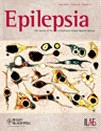Mameniskiene R, Bast T, Bentes C, Canevini MP, Dimova P, Granata T, Høgenhaven H, Jakubi BJ, Marusic P, Melikyan G, Michelucci R, Mukhin KY, Oehl B, Ragona F, Rossetti AO, Rubboli G, Schubert S, Stephani U, Strobel J, Vignoli A, Zarubova J, Wolf P. Epilepsia. 2011 Jun;52(6):1168–76. doi: 10.1111/j.1528-1167.2010.02974.x. Epub 2011 Feb 14. IF: 3,955

Abstract:
PURPOSE: To gain new insights into the clinical presentation, causes, treatment and prognosis of epilepsia partialis continua (EPC), and to develop hypotheses to be tested in a prospective investigation. METHODS: In this retrospective multicenter study, all cases were included that fulfilled these criteria: constantly repeated fragments of epileptic seizures, with preserved consciousness, lasting ≥ 1 h and representing locally restricted motor or sensory epileptic activity. Single episodes were included when they lasted for a minimum of 1 day. EPC with Rasmussen syndrome and acute stroke were excluded. KEY FINDINGS: Three time courses with two subtypes each were distinguished, that is, EPC as a solitary event (de novo or in preexistent epilepsy); chronic repetitive nonprogressive EPC (with frequent or rare episodes); and chronic persistent nonprogressive EPC (primarily or evolving out of an episodic course). These were unrelated to etiologies (morphologic lesions 34%, inflammatory 29%, systemic disorders 9%, idiopathic 5%, unknown 23%). Precipitation and inhibition of seizures is a frequent feature of EPC. Levetiracetam and topiramate have improved the possibilities for pharmacotherapy. Topiramate seems to be particularly effective with dysontogenetic etiologies. SIGNIFICANCE: The existence of several clearly distinct courses of nonprogressive EPC is a new finding. These distinctions will be further investigated in a prospective study with precise protocols for electroencephalography (EEG), imaging, and other studies. This should better establish the relation of motor and somatosensory EPC; further clarify the relations, pathogenesis, and significance of the different types and their etiologies; and possibly identify more semiologic variants. It should also provide more precise knowledge about therapy and modification of ictogenesis by external stimuli.
